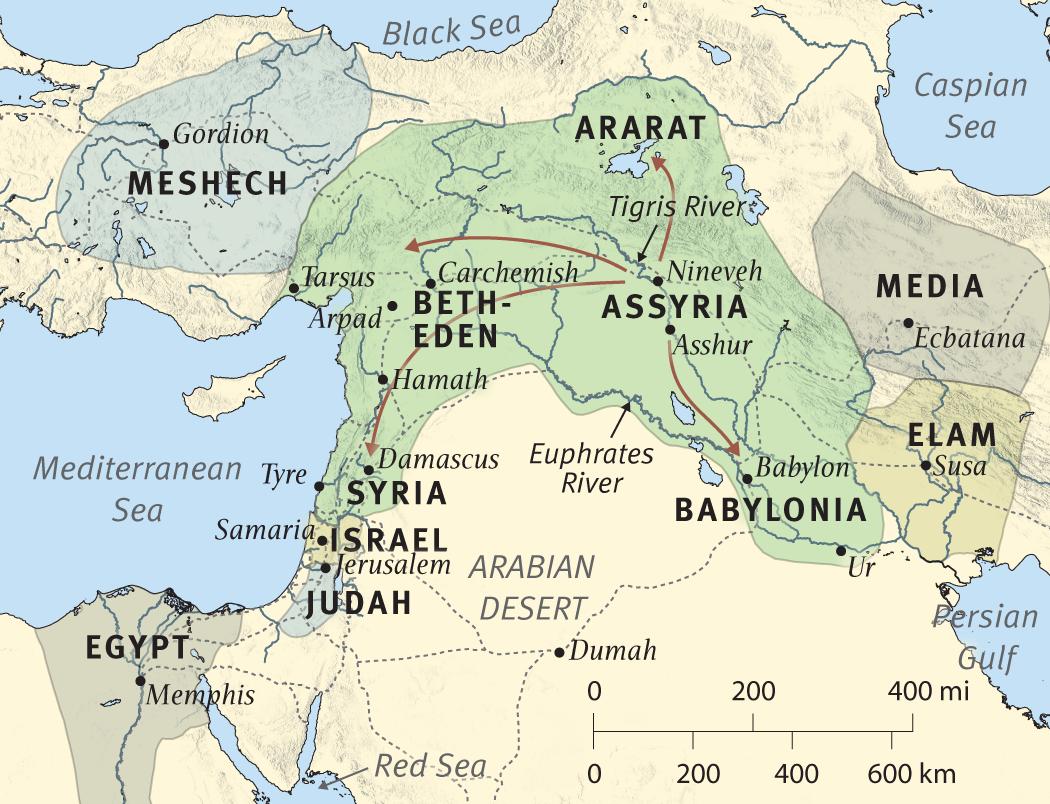
The population of Nineveh after the time of Sennacherib’s reign (704–681 B.C.) was close to 300,000, over twice as many people as in Jonah’s time. This huge population increase was due primarily to Sennacherib making Nineveh the capital of the Assyrian Empire. He created new streets and open spaces for trade and built his famous “palace without rival.” These attractions would have drawn thousands of people to live in Nineveh.

Micah prophesied during the reigns of the Judean kings Jotham (750–735 B.C.), Ahaz (735–715), and Hezekiah (715–687). This was about the same time as Hosea and Isaiah, though Micah may have served somewhat later. The length of Micah’s public activity may have been about 20 to 25 years.
The theme of Micah is judgment and forgiveness. The Lord, the Judge who scatters his people for their sins, is also the Shepherd-King who in covenant faithfulness gathers, protects, and forgives them.
Micah writes to bring God’s “lawsuit” against his people (3:8). He indicts Samaria and Jerusalem for their sins (1:2–7). Both Assyria (5:5–6) and Babylon (4:10) stand ready to carry out God’s judgment. The reigns of Jotham, Ahaz, and Hezekiah, along with the increasing threat of Assyria, provide the broad background for Micah.
Micah lists specific sins of both the northern and southern kingdoms. These sins include idolatry (1:7; 5:12–14); the seizure of property (2:2, 9); the failure of civil leadership (3:1–3, 9–10; 7:3), religious leadership (3:11), and prophetic leadership (3:5–7, 11); offering sacrifice without truly repenting (6:6–7); and corrupt business practices and violence (6:10–12).
c. 740 B.C.
Micah prophesied to Israel and Judah from the time just before the fall of Samaria through the time of King Hezekiah of Judah. Micah saw the destruction of Israel by Assyria. He probably also saw the Lord’s dramatic rescue of Jerusalem from the Assyrians during Hezekiah’s reign.
